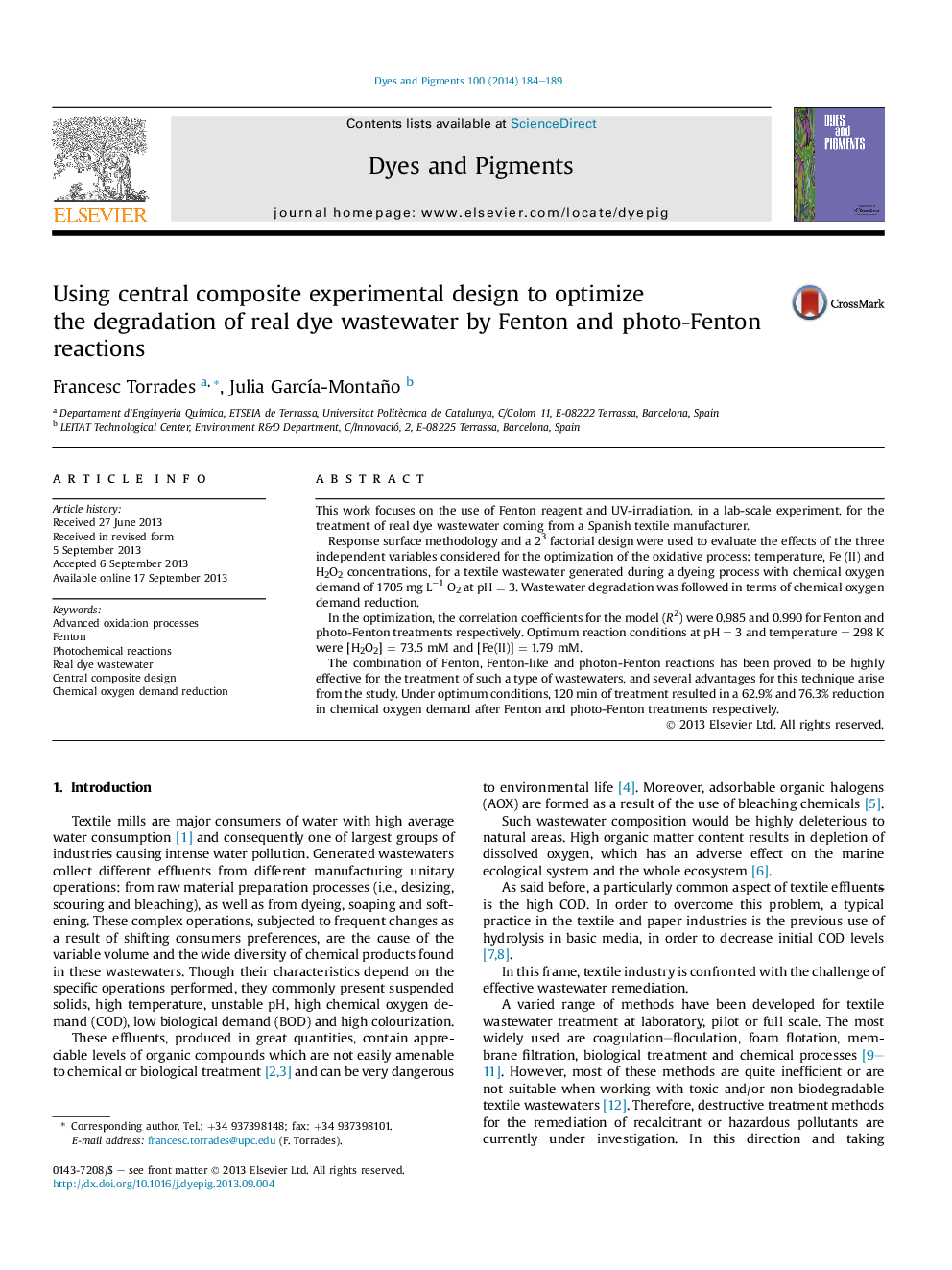| کد مقاله | کد نشریه | سال انتشار | مقاله انگلیسی | نسخه تمام متن |
|---|---|---|---|---|
| 176319 | 458940 | 2014 | 6 صفحه PDF | دانلود رایگان |
• Fenton and photo-Fenton degrade successfully real dye wastewater.
• Response surface methodology is a suitable method to optimize the operating conditions in real dye wastewater removal.
• 62.9% and 76.3% chemical oxygen demand reduction are attained under optimum Fenton and photo-Fenton conditions.
This work focuses on the use of Fenton reagent and UV-irradiation, in a lab-scale experiment, for the treatment of real dye wastewater coming from a Spanish textile manufacturer.Response surface methodology and a 23 factorial design were used to evaluate the effects of the three independent variables considered for the optimization of the oxidative process: temperature, Fe (II) and H2O2 concentrations, for a textile wastewater generated during a dyeing process with chemical oxygen demand of 1705 mg L−1 O2 at pH = 3. Wastewater degradation was followed in terms of chemical oxygen demand reduction.In the optimization, the correlation coefficients for the model (R2) were 0.985 and 0.990 for Fenton and photo-Fenton treatments respectively. Optimum reaction conditions at pH = 3 and temperature = 298 K were [H2O2] = 73.5 mM and [Fe(II)] = 1.79 mM.The combination of Fenton, Fenton-like and photon-Fenton reactions has been proved to be highly effective for the treatment of such a type of wastewaters, and several advantages for this technique arise from the study. Under optimum conditions, 120 min of treatment resulted in a 62.9% and 76.3% reduction in chemical oxygen demand after Fenton and photo-Fenton treatments respectively.
Journal: Dyes and Pigments - Volume 100, January 2014, Pages 184–189
